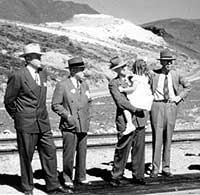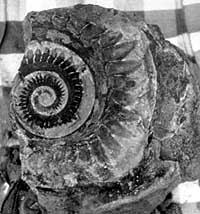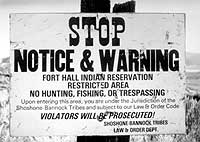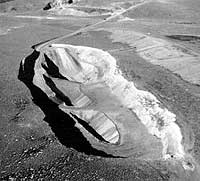

|
Page
143
|

(left) Captains of Industry at the dedication of Gay Mine railhead, September 22, 1948. L to R, Jack R. Simplot, Harry Morrison of Morrison-Knudsen (builders of the railroad), Jack Avery (Vice President of the Union Pacific) holding Gay Simplot, Sprague Haney; J.R. Simplot Company Collection.
(center) Coiled teeth of Helicoprion, a Permian shark whose teeth are stored inside its head. Helicoprion teeth are common fossils in the Permian Phosphoria Formation. J.R. Simplot Company Collection.
(upper right) Sign at entrance to Fort Hall Indian Reservation, (July, 1984).
(right) Aerial photograph of one of the southern pits of the Gay Mine, (September, 1989)
